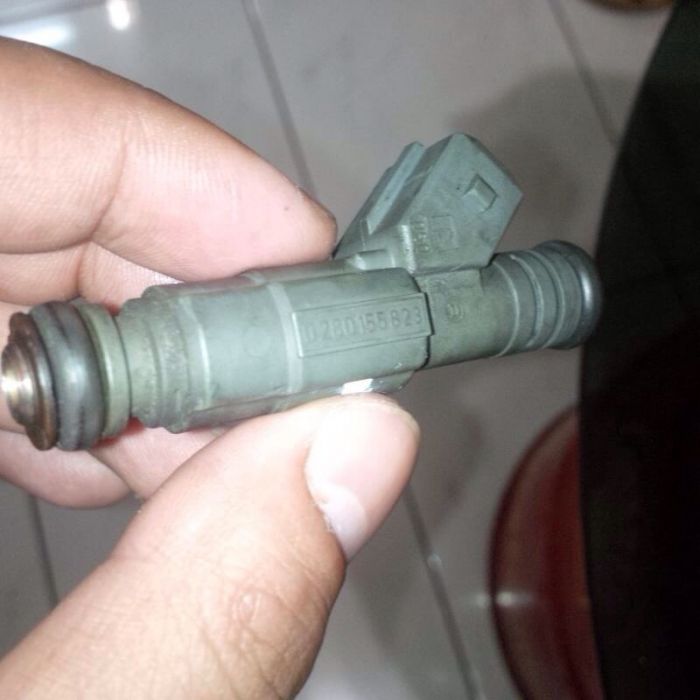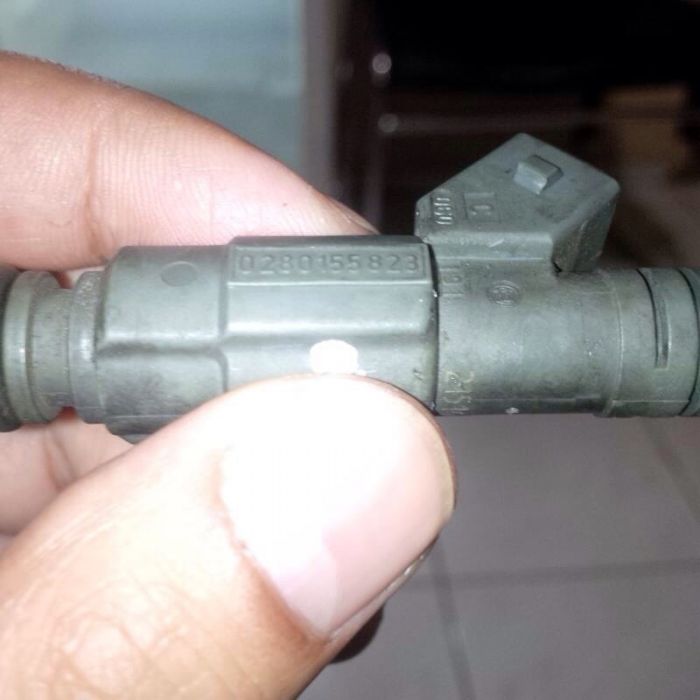stan
Site Moderator
Member Since: 13 Jul 2010
Location: a moderate moderated moderator moderating moderately in moderation
Posts: 35884


|
OBD II P0171 Fuel System Too Lean (Bank 1)
OBD II P0174 Fuel System Too Lean (Bank 2)
Symptoms
Check Engine Light will illuminate
In some cases, no adverse conditions may be noticed by the driver
In other cases, there may be performance problems, such as a lack of power on acceleration and some "coughing" or misfiring
The vehicle may have trouble idling, especially when warm or when sitting at a stoplight
Common Problems That Trigger the P0171 and P0174 Code
- PCM software needs to be updated
- Vacuum leaks (Intake Manifold Gaskets, vacuum hoses, PCV hoses, etc.)
- Mass Airflow Sensor (MAF)
- Plugged Fuel Filter or weak Fuel Pump
- Plugged or dirty Fuel Injectors
Common Misdiagnosis
- Oxygen Sensors
Polluting Gases Expelled
- NOX (Oxides of Nitrogen): One of the two ingredients that, when exposed to sunlight, cause smog
- HCs (Hydrocarbons): Unburned droplets of raw fuel that smell, affect breathing, and contribute to smog
The Basics
Combustion engines operate by burning an air/fuel mixture of about 14.7 to 1—14.7 parts air to 1 part fuel. When the air ratio goes below 14.7 parts, this is called a "rich" mixture. If the air rises above 14.7 parts, it is called a "lean" mixture.
Rich Mixture = Too much fuel, not enough air
Lean Mixture = Too much air, not enough fuel
To keep the engine running properly, the Engine Control Module measures the oxygen content in the exhaust with oxygen sensors and makes adjustments to the mixture by injecting more or less fuel.
The control module operates within specific parameters and under normal conditions, it will make minor adjustments to the air/fuel mixture. When these adjustments become too large, a fault code is set. When the P0171/P0174 code sets, the oxygen sensors are detecting too little oxygen in the exhaust and the control module is adding more fuel than normal to sustain the proper air/fuel mixture.
P0171/P0174 Diagnostic Theory for Shops and Technicians
When a vehicle has the fault code P0171 and or P0174, it means that computer can no longer automatically adjust the mixture between air and fuel. Code P0171 applies to Bank 1 and P0174 applies to Bank 2. Code P0174 mainly applies to V6 or V8 engines because 4-cylinder engines generally have only one bank, though there are a few exceptions. Some of the high performance 4-cylinder and straight 6-cylinder engines (such as those in BMW and Lexus) split the cylinders into groups of two or three and call them separate banks.
When the code says that the Fuel System is "too lean," it means that the computer has been adding more and more fuel, which is called Long Term Fuel Trim. Ideally, the Long Term Fuel Trim should be close to 1 to 2 percent. When a code P0171 is set, it means that the Fuel Trim is anywhere from 15 percent to as high as 35 percent compensated. When this happens, the computer knows that there is an improper condition in the control of the Fuel System.
The first step in the diagnosis of a code P0171 and/or P0174 is to look at a minimum of three ranges of the Long Term Fuel Trim numbers on a scanner. Check the idle reading—3000 RPM unloaded and 3000 RPM with at least 50 percent load. Then check the freeze frame information for the code to see which range(s) failed and what the operating conditions were.
Before we get into the main causes of P0171, let's explore why this code matters.
Why Does a P0171/P0174 Code and Running "Too Lean" Matter?
"Lean" running cars and light trucks are highly polluting vehicles. Most of the NOx pollution, which is poisonous and can cause asthma, is caused by vehicles that are running too lean. A lean running car can also misfire, which puts raw fuel (HCs) into the atmosphere. When you are behind a car or truck that smells bad and makes your eyes burn, it is misfiring and running too lean. In comparison, a "rich" running engine has no smell (CO is odorless) or you may detect a rotten egg smell, which is caused by the Catalytic Converter consuming too much sulfur, like when you are behind a big SUV at full throttle going up a long, steep hill.
P0171 is not an Oxygen Sensor problem. Before a P0171 code is possible, the computer first ran a series of tests to validate the readings from the oxygen sensors. Since the oxygen sensors passed their readiness tests and didn't set any codes, the computer then looked to the Fuel Trim adjustment. When the computer determined the air-to-fuel mixture to be too lean, it then set the P0171 code.
What Are Some Common Causes of Code P0171/P0174?
Always check to make sure that there is not a PCM software update due or available. Often, as the vehicle's engine wears, the PCM's Fuel Map software inaccurately compensates for this condition. The fuel mixture grows lean and eventually, the code sets.
A vacuum leak is very common. It could be a torn PCV hose, a torn Intake Air Boot, or even a broken seal on the dipstick (the dipstick is a part of the PCV system and if it does not seal, too much unmetered air will enter the engine). Don’t rule out a sticking/leaking EGR Valve or leaking EGR or Intake Manifold Gasket. If it is a V6 or V8 engine and the code is only on one side/bank, it could be a defective Intake Manifold Gasket or cracked/leaking manifold.
What if There Is No Vacuum Leak or Both Codes (P0171 and P0174) Set?
An "under reporting" Mass Air Flow Sensor can be a common cause of a code P0171 and P0174. Essentially, this means that the Air Flow Sensor is telling the computer that much less air is entering the engine than actually is.
Since the oxygen sensors are telling the computer that more fuel is needed, this causes confusion in the computer because the Mass Air Flow Sensor is still saying there is too little air and the Oxygen Sensor is reporting that the mixture is still too lean. The computer tried to compensate, but since resolution is impossible, it sets the code. It is important to restate that the Oxygen Sensors are accurate—the fuel mixture is too lean. In this case, the Air Flow Meter or Sensor is inaccurately reporting the real amount of air entering the engine.
How Do I Know if the Problem Is the Mass Air Flow Sensor?
There is a very effective "truth test" for any Mass Air Flow Sensor. Start the engine, let it idle, and then check the Barometric Pressure reading on the scan tool data. If the reading is about 26.5 Hg and you are close to sea level, you know that you have a defective Air Flow Meter because it is telling you that you are at about 4500 feet above sea level. (These conversion tables will help.) When the Mass Air Flow Sensor sees this Barometric reading, it adjusts its Air Density table and then "under reports" the actual amount of air entering the engine. It does this because the Barometric Pressure Sensor is actually part of the Mass Air Flow Sensor.
Sometimes the Air Flow Sensor and the sensing wire get covered with dirt, dust, or oil residue, which can also set a P0171. Cleaning the sensor might hold off problems for a while, but eventually, the MAF sensor should be replaced. Always make sure the Air Filter and its enclosure are dirt-, dust-, and oil-free. If you clean and replace the filter and its enclosure as needed, you will prevent the new MAF from failing.
Additional Causes of Code P0171/P0174
A plugged Fuel Filter or poorly functioning Fuel Pump can set the P0171 code. The computer hears (accurately) from the Oxygen Sensor that the Fuel Mixture is too lean so the computer keeps increasing the amount of fuel being delivered into the combustion chambers. But in this case, the Fuel System can’t increase the amount of fuel.
If you still can't find the problem, be sure to check and verify that fuel pressure and delivery are at spec. If fuel pressure and volume check out okay, scope the injectors and perform injector drop and/or flow tests to see if they are capable of delivering enough fuel. Dirty/contaminated gas can definitely plug injectors and trigger these lean codes." ... - .- -.
Y. O. L. O.
.
|


























![]()


